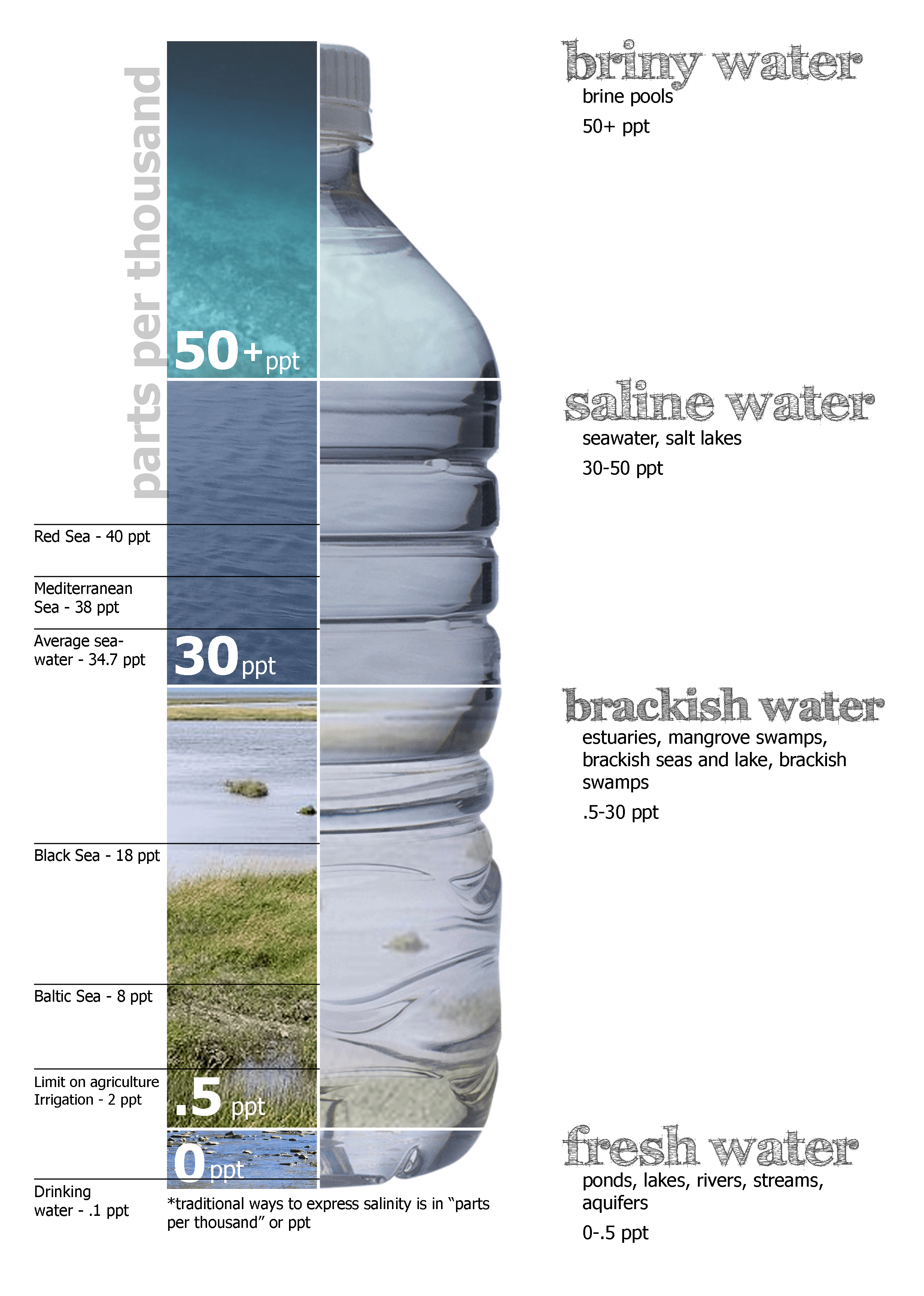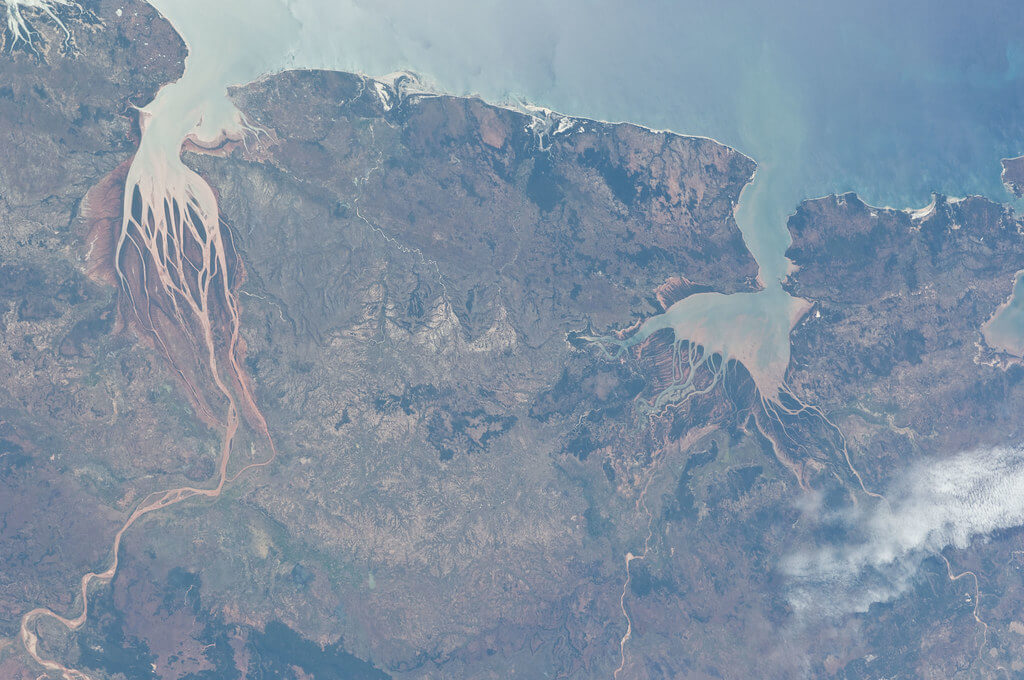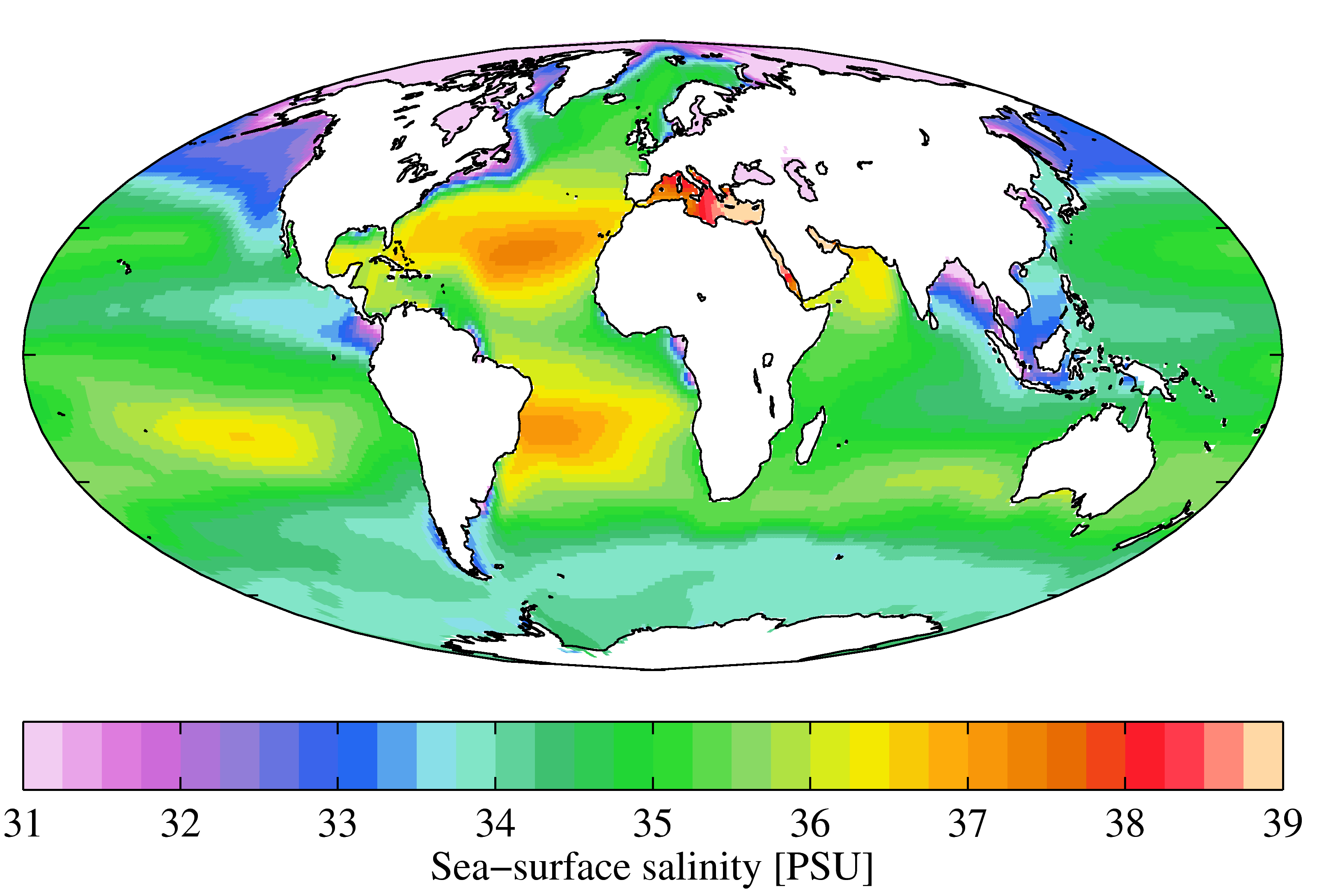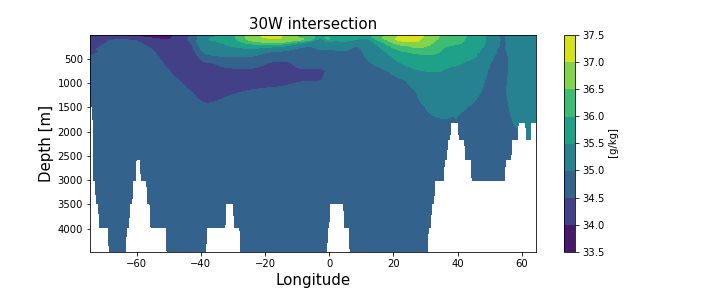Salinity of Ocean waters
In this article, we are going to study the concept of salinity of sea water, its variation and effects.
 Table of Contents
Table of Contents- What is Salinity?
- Factors affecting Ocean Salinity
- Variation in Salinity in Oceans
What is Salinity?
Salinity is a term that is used to define how saline a particular mass of sea water is. That is, it represents the amount of salts dissolved in sea water.
We often represent it using the units parts per thousand (o/oo) or ppt. That is, how many grams of salt is present in 1000 grams (or 1 kg) of sea water.
 Brackish Water
Brackish WaterBrackish Water lies somewhere in between fresh water and sea water. It has more salts than fresh water, but less salts than sea water.
If salt content in a water body is over 24.7 o/oo, then that water will be called sea water. Below that, it is brackish water.
Factors affecting Ocean Salinity
Now, let us see the various factors that effect the salinity of a water body. Our focus will be more on oceans, but the factors enumerated below will apply to any water body in general.
Winds
Wind has an impact on flow of surface ocean water. It transfers water across oceans, and so it impacts the salinity of oceans.
Ocean Currents
Ocean currents also distribute water across oceans. So, they also influence salinity variation across oceans.
Salinity near Ocean Surface
Evaporation
Salinity near ocean surface is affected a lot by the amount of solar radiation received and the temperature.
More the solar radiation received, and more the temperature, the more intense will be the process of evaporation. As water evaporates, the water left behind becomes more saline.
Precipitation
Salinity near the ocean surface is also affected a lot by the amount of rainfall received. Rain is freshwater with low salt content. So, more the rain, the less will be the salinity near the surface.
Salinity of Ocean water near Land
Salinity near Deltas
Salinity of ocean water near coastal regions is generally lower, especially near river deltas. That’s because rivers carry fresh water and so at the places where they fall into the ocean, the salinity is bound to drop.
Salinity near Poles
Salinity near poles is affected by polar ice. As polar ice is melting, we can witness drop in salinity in ocean water near poles.
Here salinity varies seasonally. When ice melts, the salinity of ocean water drops; and when ice freezes, the salinity of ocean water increases again.
 Salinity, Temperature and Density
Salinity, Temperature and DensityThese three factors are correlated, i.e. they tend to influence each other.
- Colder water is denser, and so it sinks below warm water.
- More saline water is also denser, and so it sinks below less saline water.
As you can guess, cold saline water is the most dense, while warm freshwater is the lest dense.
Variation in Salinity in Oceans
As there are so many factors that effect the salinity of oceans, it’s natural that there will be a wide variation in salt concentration in various oceans, and even within various parts of an ocean.
We will study this variation in two parts:
- How salinity varies across various oceans, i.e. Horizontal variation
- How salinity varies as we go down in an ocean, i.e. Vertical variation
Horizontal distribution of salinity
Salinity across various oceans and seas varies a lot. It also varies with seasons. Let us outline the average and extremes of this phenomenon. Thereafter, we will have a look at salinity variations in the major oceans of the world.
Average salinity of open ocean varies from 33 o/oo to 37 o/oo.

However, in hot and dry regions, due to high rate of evaporation, salinity may rise upto 70 o/oo. A very famous example is the almost land locked Red sea, wherein average salinity is as high as 41 o/oo.
In estuaries and the Arctic, you will find seasonal variation. Here, salinity may vary from 0 to 35 o/oo. For example, during monsoon season (July-August) in Indian subcontinent, there is excessive flow of fresh water in rivers and so you will find that estuaries near Bay of Bengal and even Arabian Sea are filled with fresh water. Same is true during summer season in Arctic when the polar ice melts, bringing in a lot of fresh water.
 Estuaries
EstuariesEstuaries are partially closed, coastal water bodies, where fresh water from rivers meet the salt water of the oceans.

Now, let’s have a look at salinity variation in three major oceans of the world.
Salinity variation in Pacific Ocean
In Northern Hemisphere: Salinity of Pacific Ocean falls down to around 31 o/oo on the western parts near the Arctic Ocean, due to influx of fresh melted water from the poles.
In Southern Hemisphere: Salinity of Pacific Ocean falls down to around 33 o/oo after 15° - 20° south, as we approach the Antarctic.

Salinity variation in Atlantic Ocean
Average salinity in Atlantic Ocean is around 36 o/oo. Maximum salinity (around 37 o/oo) is observed between 15° and 20° latitudes. It decreases as we move towards the poles.
Now, let’s have a look at salinity levels of various seas connected to Atlantic Ocean:
- North Sea: It’s located in high latitudes, near the poles, but still the salinity levels here are higher than expected. That’s because of the North Atlantic Drift, which brings in a lot of saline water with it.
- Mediterranean Sea: Salinity levels here are high due to excessive rate of evaporation.
- Baltic Sea: Salinity levels here are low due to a lot of fresh water being brought by rivers.
- Black Sea: Just like Baltic Sea, here salinity is low due to influx of fresh water from rivers.
Salinity variation in Indian Ocean
Average salinity in Indian Ocean is around 35 o/oo. There are two major seas in Indian Ocean. Let’s study them one by one.
- Bay of Bengal: Salinity levels here are lower due to influx of a lot of freshwater from the rivers. This phenomenon is even more palpable during the monsoon season.
- Arabian Sea: Comparatively, here salinity levels are higher. As it receives less amount of freshwater from rivers as compared to Bay of Bengal. Also, evaporation rate is higher.
Vertical distribution of salinity
The salinity of water deep down in oceans remains almost constant. That’s because the factors effecting salinity do not have much effect at depth.

However, salinity near the ocean water surface may vary a lot because of distribution of water due to winds and ocean currents, as well as because of the phenomenon like evaporation, precipitation, and influx of freshwater from rivers.
As more saline water is denser, the low salinity water rests above it. In other words, if other factors (like temperature) are constant, more saline water sinks below the less saline water. This leads to stratification by salinity.
